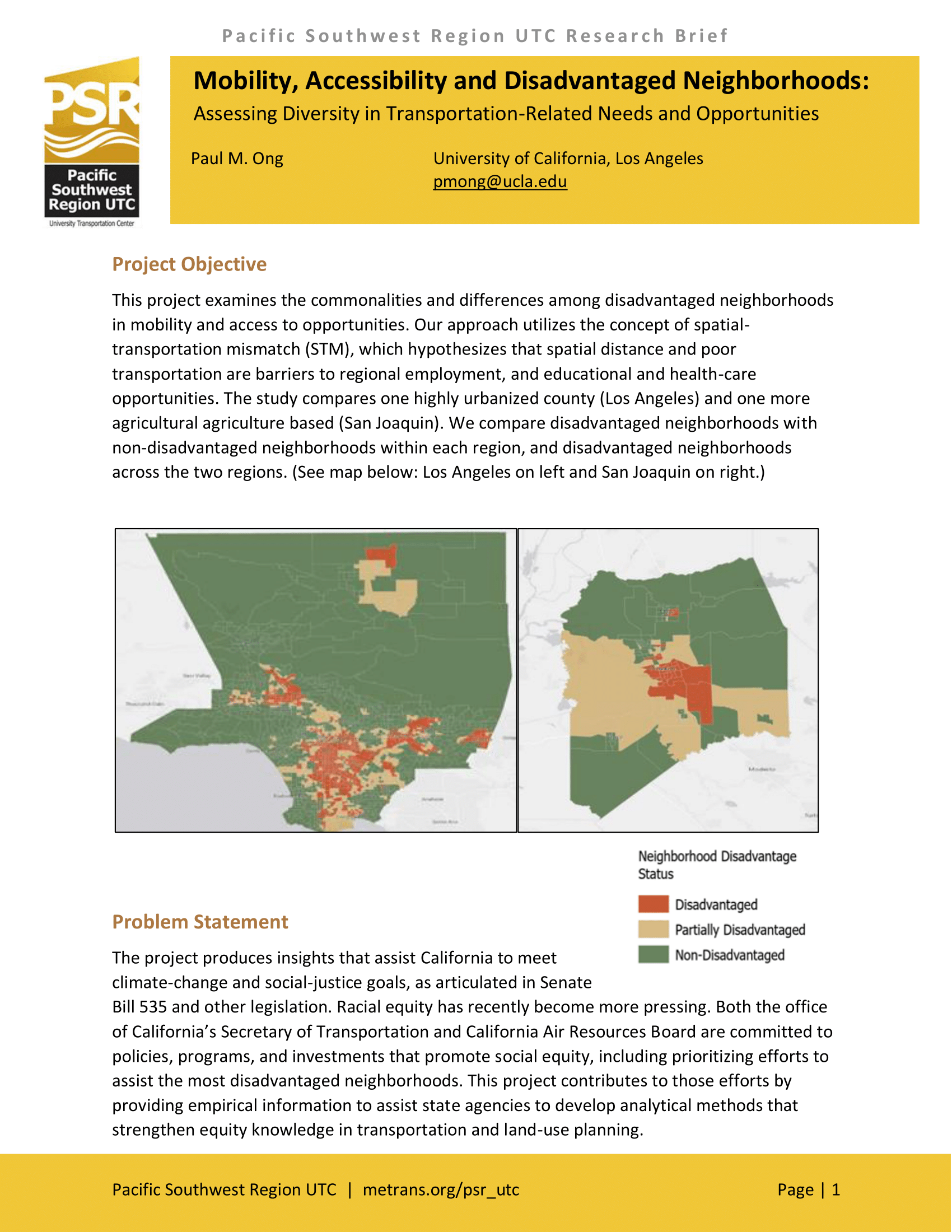Date: June 1, 2021
Author(s): Paul M. Ong
Abstract
This project examines the commonalities and differences among disadvantaged neighborhoods in mobility and access to opportunities. Our approach utilizes the concept of spatial-transportation mismatch (STM), which hypothesizes that spatial distance and poor transportation are barriers to regional employment, and educational and health care opportunities. The study compares one highly urbanized county (Los Angeles) and one more agriculture based (San Joaquin). We compare disadvantaged neighborhoods with non-disadvantaged neighborhoods within each region, and disadvantaged neighborhoods across the two regions.
About the Project
To understand the nature and magnitude of commonalities and differences among neighborhoods in mobility and access to opportunities, the project will construct and analyze tract-level and transportation-mode-specific accessibility indicators to employment, quality elementary schools, and primary health care.


